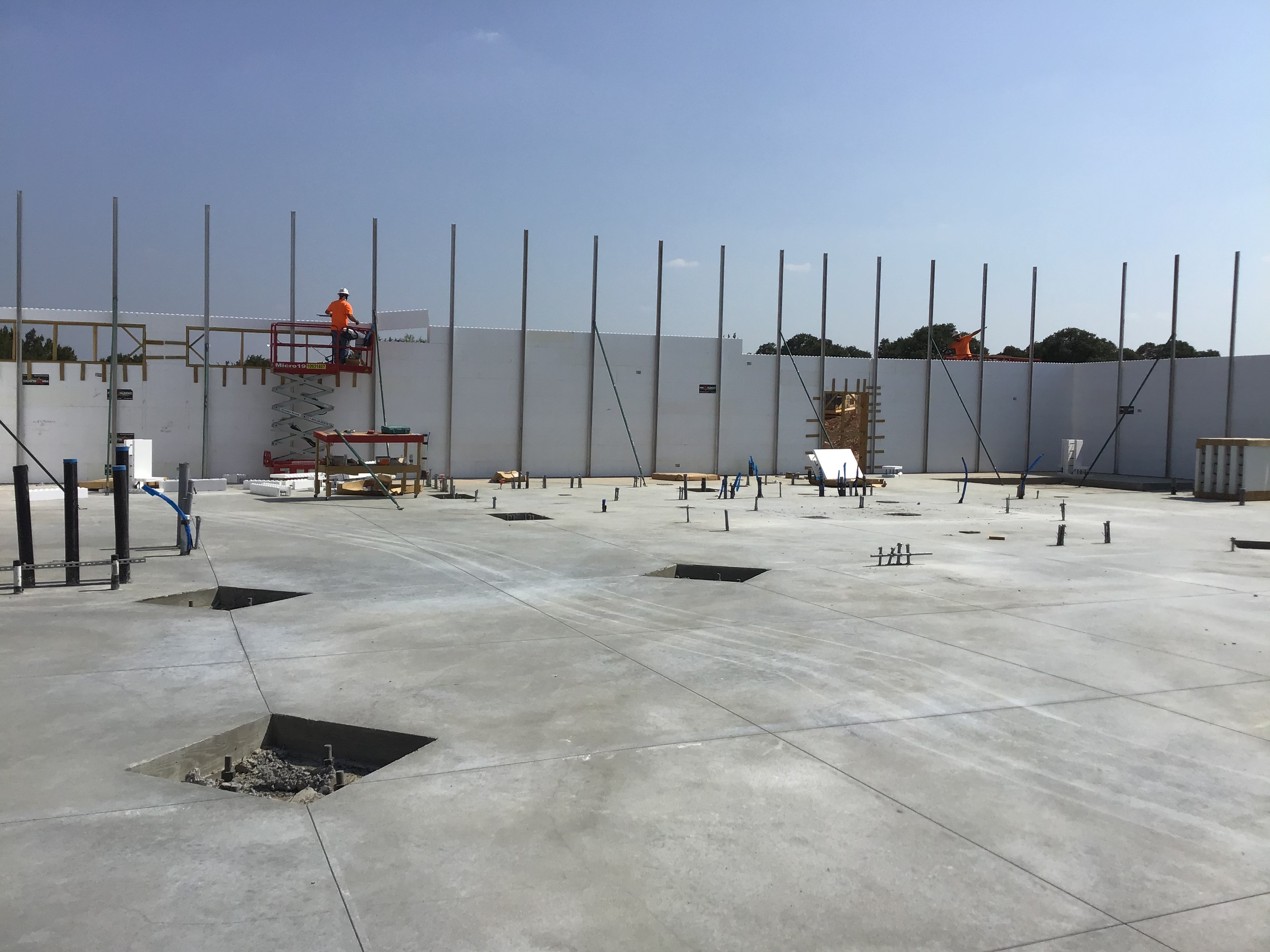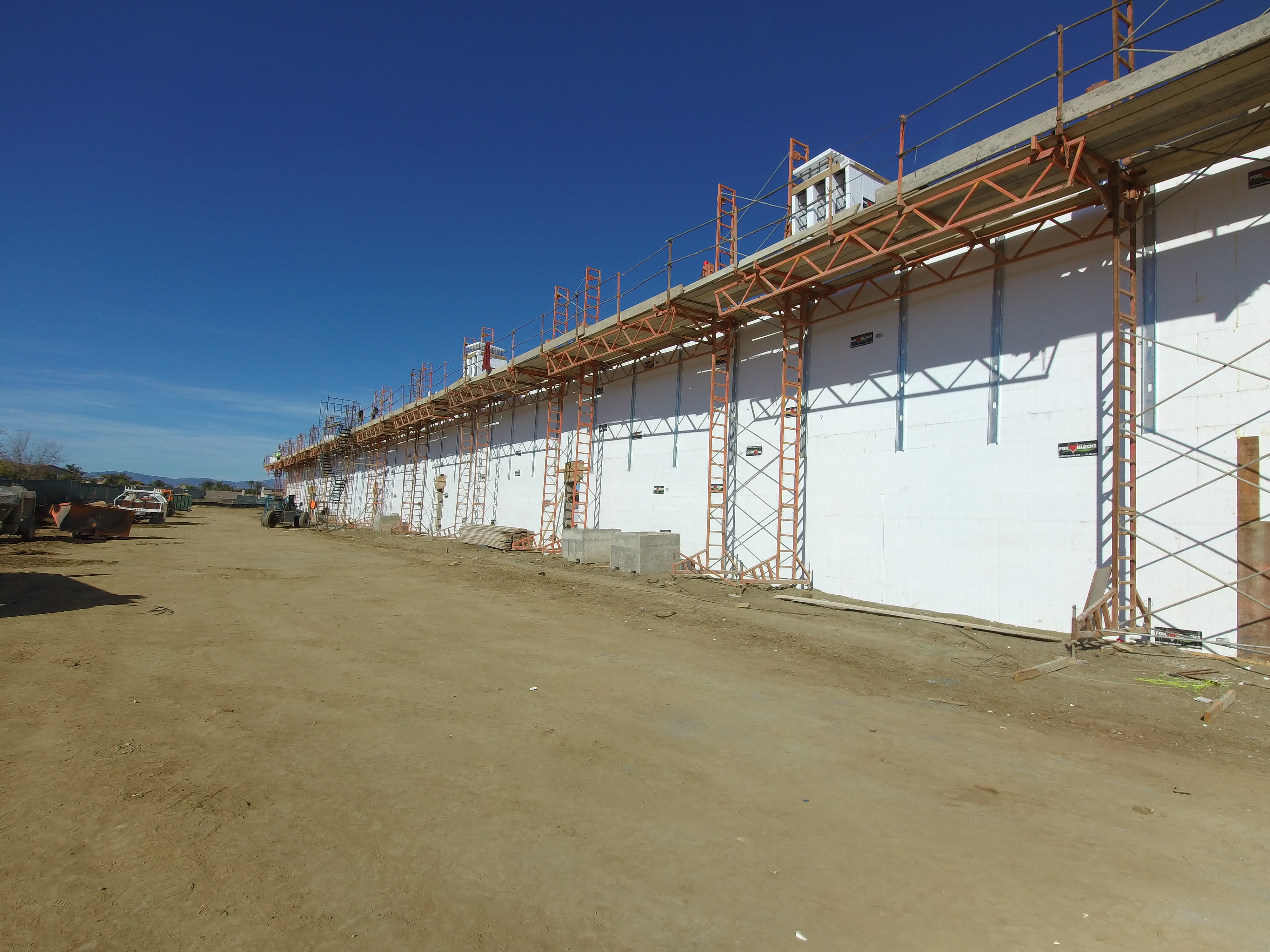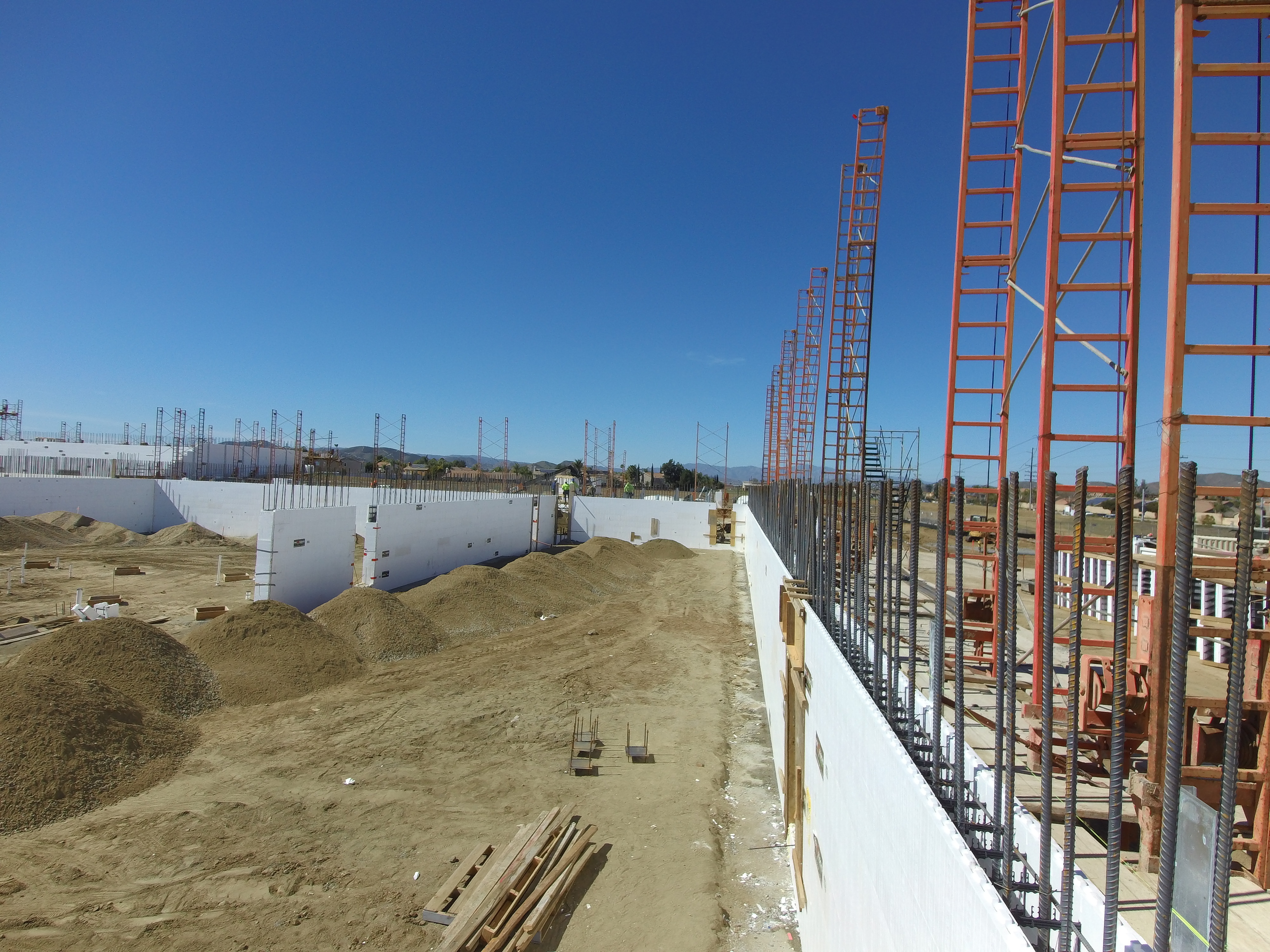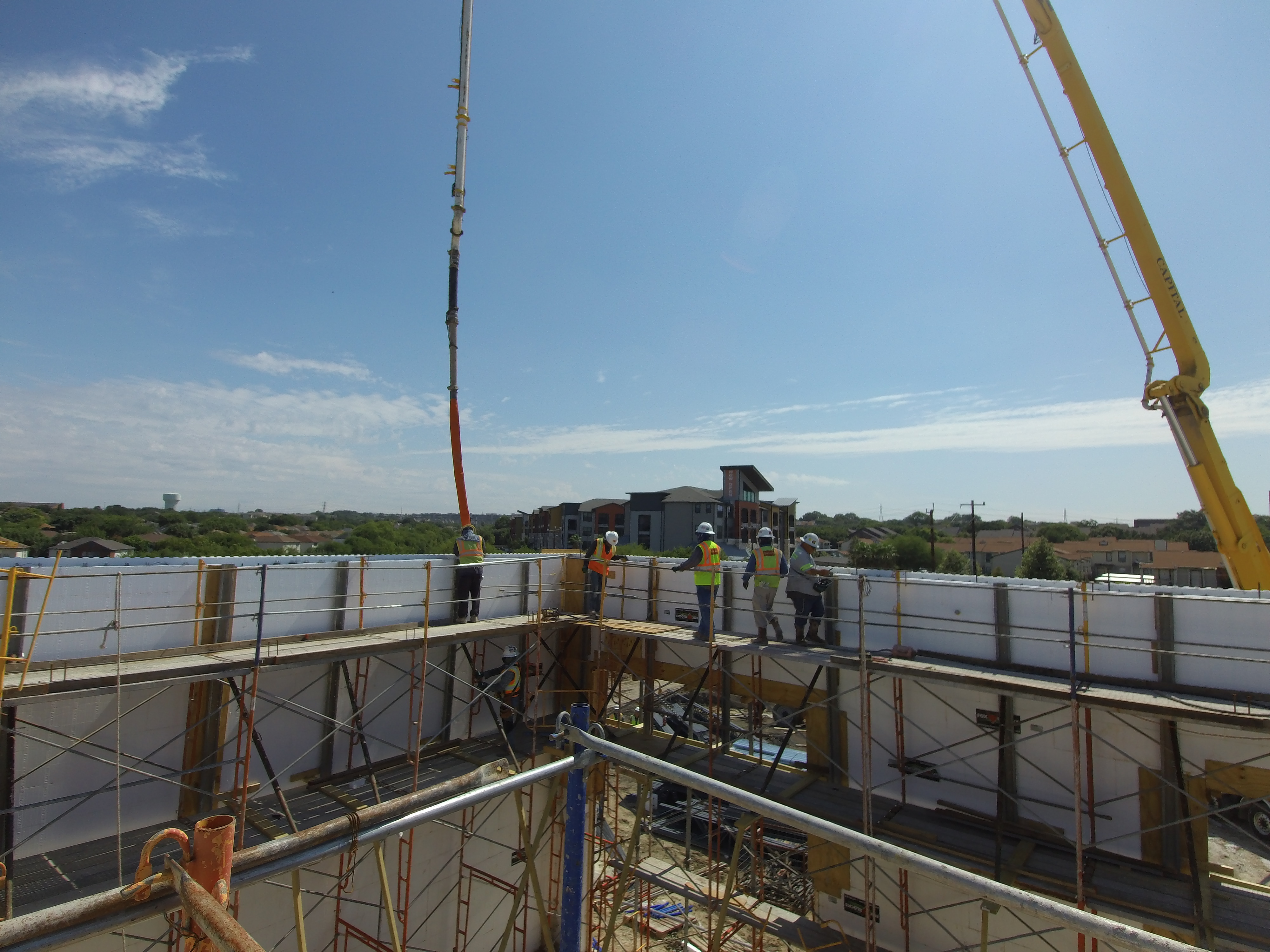
8 Tips for Contractors Installing ICF on Commercial Projects

For above and below-grade projects ranging from offices, hotels, schools, government buildings and more, ICF installation is a smart addition to any commercial project. But, commercial ICF installation can seem complicated and overwhelming if you don’t go in prepped and prepared.
There are many ICF installation tips and tricks that contractors should have in their back pocket before starting the installation process, especially when working on larger commercial projects with tight deadlines and budgets.
We want to make the process as efficient and easy as possible for you: Keep reading to learn eight of our best tips for installing ICF on commercial projects.

1. Design Within the Modulus
By optimizing the dimensions of your project’s building to work with the modulus of the ICFs, you will reduce your waste and speed up your design process. Less waste is not only good for the environment but also for your bottom line.
Your structural engineers on the project can optimize the placement of the rebar by adjusting the rebar placement schedule so it corresponds with the height of each course of your ICFs.
2. Follow the Manufacturer’s Design Guidelines
Whichever ICF manufacturer you choose to move forward with, follow the design guidelines that they should have provided for you. This allows for greater coordination between all your contractors, engineers, and the rest of your team and trades.
3. Don’t Buy Unnecessary Tools or Supplies
Before the innovative introduction of ICFs, architects and contracts had to incorporate air barriers, vapor retarders and other weather-resistant barriers into their walls system. With ICF installation, you don’t need any extra layers so make sure you double-check your wall assembly for redundancy. And remember, ICF walls are fully furred out as well, so you don’t need to stick or steel stud furring for interior or exterior attachments.
Make sure you are up to date on all building codes because that can determine necessary methods, techniques, and materials as well. For example, weather-resistant paper was required for ICF walls pre-2007. But, with the adoption of the 2006 International Building Code on January 1, 2007, weather-resistant paper is no longer legally required.
4. Place Your Necessary Parts Before Pouring
Put all of the ICF hangers, ledger boards, beam pockets and requisite parts in place before you begin pouring. Prepare the top of the wall for the next level of the building by taping the top so the next level begins with a clean surface.
Fox Blocks has a numbered checklist for our contractors to ensure you are confident and on the right track every step of the way, so you can be sure you have everything you need before beginning the next step and ensure no steps are missed.

5. Good Vibrations
Consider using a small-diameter mechanical vibrator (1” - 1.5” head) to ensure that your concrete consolidation produces solid concrete walls. (Some commercial-grade installers prefer using a rebar shaker such as the Oztech brand to perform the consolidation task on tall wall applications.) No matter what vibrator or shaker you use, make sure to follow ACI Concrete Placement and Consolidation techniques.
Ensure your mix design is in the slump range and aggregate size that is most easily placed and consolidated within the ICF of choice. Refer to your ICF manufacturer’s suggested guidelines for preferred ICF concrete mix design if you are unsure what size mix to use. Commercial projects with high volume pour days are benefited greatly by correct mix design.
6. Realign Walls
Make sure you realign the walls after you pour the concrete. This step is very important and is often overlooked by installers.
ICF bracing by itself and in combination with traditional scaffolding allows for the walls to be aligned after each lift is poured. The more attention you can provide to level, straight and plumb, the better. The last checklist item on pour day should be to check alignment.
7. Pay Attention to the Roof, Windows and Doors
To leverage the thermal characteristics of your ICF wall, you should pay special attention to your roof. You need to make sure you optimize the continuity of the insulation and air barrier at the connection point to the roof of your building.
This detail is often ignored or glazed over, which severely compromises the thermal envelope — what a shame after all of the work that went into the ICF installation! And of course, don’t forget to focus on windows and doors to secure the building envelope as you make your way up the walls.
You can install Fox Bucks (bucks made from the same material as ICF blocks) in the door and window openings. The Bucks stay in place permanently and are used to hold back the concrete and provide attachment and insulation between the concrete and the frames, removing the need to use wood or vinyl bucks.

8. Don’t Skimp
We understand that managing a budget for a large commercial project is complicated and there are definitely materials or labor that you can look for in more affordable price ranges. However, there are certain tasks you should not skimp out on to save a few bucks.
When attaching anything to an ICF, use the fastener recommended by the interior and exterior finish supplier. Our recommendation for interior and exterior applications of finish materials is to use screws, which provide the best holding capacity into the plastic webs, or fastening strips in the forms identified on each block.
You should also use a qualified, licensed ICF contractor who has commercial construction experience. The best source of these contractors is the ICF block manufacturers themselves.

Choose Fox Blocks ICF
Fox Blocks has blocks available in a number of shapes, sizes and concrete core thicknesses and can be a fantastic solution for any design you are now tasked to create. With our highly innovative products, we want to provide you with a seamless installation process.
Click here to check out our Project Estimator, or click here for information about our Integrated Learning Center, which provides comprehensive, step by step best practice installation courses. Or click here to see over 50 videos showcasing Fox Blocks’ commercial projects.